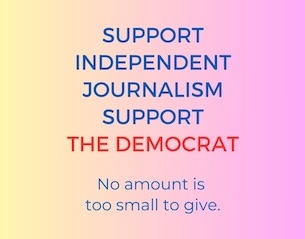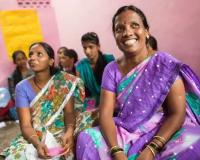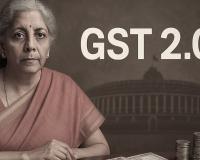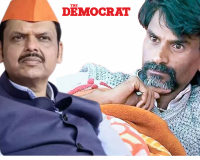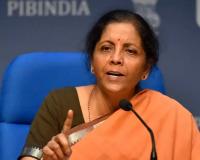- Editorial
- Sarfaroshi Ki Tamanna Ab Hamarey Dil Mein Hain
Sarfaroshi Ki Tamanna Ab Hamarey Dil Mein Hain
Sarfaroshi Ki Tamanna is a patriotic poem written in Urdu by Bismil Azimabadiof Patna in 1921, and then it was also immortalised by Ram Prasad Bismil as a freedom war cry during the British Raj. The poem was written as an ode to young freedom fighters of the Indian independence movement. It has also been associated with the younger generation of inter-war freedom fighters such as Ashfaqullah
Sarfaroshi Ki Tamanna is a patriotic poem written in Urdu by Bismil Azimabadiof Patna in 1921, and then it was also immortalised by Ram Prasad Bismil as a freedom war cry during the British Raj. The poem was written as an ode to young freedom fighters of the Indian independence movement. It has also been associated with the younger generation of inter-war freedom fighters such as Ashfaqullah Khan, Bhagat Singh and Chandrashekhar Azad.
Ram Prasad Bismil (11 June 1897 – 19 December 1927) was an Indian revolutionary who participated in Mainpuri conspiracy of 1918, and the Kakori conspiracy of 1925, and struggled against British imperialism. As well as being a freedom fighter, he was a patriotic poet and wrote in Hindi and Urdu and he became popular with the name “Bismil”. Bismil was one of the founding members of the revolutionary organisation Hindustan Republican Association (HRA).
Ashfaqulla Khan was (22 October 1900 – 19 December 1927) was one of the first freedom fighter in the Indian independence movement. To give a boost to their movement of HRA and buy arms and ammunition to carry out their activities, the revolutionaries looted the train carrying British government money in Kakori near Lucknow. He was later arrested and was put to death by hanging on 19 December 1927 at Faizabad jail. This revolutionary man became a martyr and a legend among his people due to his love for the motherland, his clear thinking, unshakeable courage, firmness and loyalty.
And December 19 became since then Shahadat Diwas (the Martyrdom Day), the other one being March 23 when Bhagat Singh, Sukhdev and Rajguru were hanged to death by the British imperialists.
Bismil and Ashfaqullah became the heroes of the then India and inspired lacs of freedom fighters thereafter and their war cry became a household song. The poem Sarfaroshi ki tamanna was used in the 1965 Manoj Kumar movie Shaheed on the life of Bhagat Singh. It was again used (with altered lines) as the lyrics for songs two films: in the title song of the 1999 film Sarfarosh (Zindagi Maut Na Ban Jaye), and in the 2002 Hindi film, The Legend of Bhagat Singh. The poem has also been used in the 2006 film, Rang de Basanti. The poem is also referenced in abridged form in the 2009 movie, Gulaal by Anurag Kashyap.
On this Shahadat Diwas of 2019, lacs of Indian youths from more than a hundred campuses along with all left and democratic forces, civil society and several opposition parties are on the streets to protest against what they consider as a Black Law that repudiates the spirit and essence of shared history of freedom struggle by Hindus and Muslims together of undivided India.
The Citizenship Amendment Act 2019 allows citizenship to be offered to the persecuted non-Muslim immigrants from Bangladesh, Pakistan and Afghanistan, without any word for the other neighbouring countries and the other persecuted minority sects (Tamils, Madheshis, Ahmedias, Rohingyas, etc), thereby making citizenship determined by religion (which is so explicitly prohibited by Articles 14, 16 and 25 of the Indian Constitution).
And this CAA is further expected to be weaponised by the ensuing National Register of Citizens which the Home Minister Amit Shah has promised to bring soon immediately when Lok Sabha voted for CAA. The NRC, which in Assam has asked for documents from all before March 24, 1971, found 19 lacs as stateless people, and if executed across India, will have crores without such old documents. While CAA will ensure citizenship to most other communities, Muslims would be the most hard hit and may end up becoming stateless in millions.
This is this fear of becoming stateless in their own nations that Muslims are protesting in large numbers, and this is this communal citizenship scheme that the non Muslim Indians are also protesting against. In case of the Northeast, they do not at all want immigrants from Bangladesh come any further and swamp their economy, land and culture. And the culturally rich Assemese are right here!
Interestingly, global media has widely reported that Pakistani Hindu groups have rejected Indian offer to migrate to India. Bangladesh Foreign Minister has mocked saying that why would Bangladeshis now come to India as Bangladesh has above 8% GDP growth while India is hovering around 4% with huge joblessness. Also, while only 33,000 have applied for long-term Indian visa from these three nations in last 20 years, there are more than 1 lac Tamil Hindus waiting in refugee camps to be accepted as citizens. Most immigrants from East Bengal, like my ancestors who came in 1950, are already citizens for long. So who is the government feigning to protect?
The shared struggle and hard-earned freedom and the Constitution later installing a secular democratic republic are both at stake and hence youths are on ground. The ridicule by no less than the Home Minister Amit Shah that just 22 universities areprotesting has infuriated the youths even more and more than a hundred universities are expected to be on ground.
The fact that the state governments and the centre are responding by closing down internet in large parts of the country, and imposing restrictions on moving in groups vide 144 in many places like Bengaluru, show that the government is unnerved and the movement has caught on strongly.
Where does the movement go on from here?
First, it must remain non-violent in spite of provocations by the government agencies and some ruling party goons. Second, it must be a movement of India and Indian people from all backgrounds, not just of the Muslims. Third, the movement must focus on protecting the constitution and its values and not become sectarian. Fourth, the movement has to focus on the falling economy, growing joblessness, rising prices, sale of government assets incurring heavy losses (BPCL, Indian Airlines, MTNL-BSNL, etc), closure of factories and Small and Medium enterprises in a large number, and fall in GST etc. Fifth, the movement must also be for democracy and to preserve the right to protest peacefully and against the brutal use of police force on students as done in Assam, Jamia, AMU, etc.
It must be noted that, according to Forbes Statista, between 2016 and 2018 itself, Indian government has stopped the work of internet in various parts some 154 times, whereas it has been 19 times in Pakistan and Syria, and in Iraq and Turkey 8 times each. It would be worse when figures of 2019 come out since Kashmir is without internet for more than 120 days now, and now many cities are going without mobile internet in this anti CAA movement. So much for the largest democracy of the world!
It is the democratic right of the people to protest against a black law, but peacefully and avoiding wanton damage of public property. Also, it has to be noted that the Rs.3 lacs loss in sale of BPCL (as reported by Hindu) is truly a loot of public property than a fire here or there damaging a bus or a car when protest turns violent, and often so instigated by hired goons or the police itself (as seen in Jamia or AMU).
Priorities need to be understood. While India cannot feed a quarter of its 130 crores people, one-fifth of them being totally illiterate till date, half of the children being malnourished and one-third beyond the reach of formal healthcare, can it truly welcome, make legal papers, settle, feed, educate and take care of the health of millions from the neighbouring nations of India? Is that the priority today however laudable it may sound?
And when the government welcomes immigrants and prepares documents for them, can it throw its own people out who cannot produce 50-years old documents across generations in spite of staying in India and having Adhaar cards, voters cards etc? Adhaar card has reportedly covered 96% of the Indian population and should serve as a multi-purpose citizenship card.
Or is the purpose quite different? To identify, marginalize and turn ‘Other’ the poor Indian Muslims and impoverished tribals in large numbers? To keep the communal couldron on fire while majoritarian polarization is being attempted a la Ram Janmabhoomi issue, now that the quarter century old Mandir issue is ‘sorted out’?
A historic moment of judgment for the people of this great civilization is now. Today, tomorrow and the next day. Sarfaroshi ki tamanna aaj hamarey dil mein hain. Dekhna hai zor kitna bajuye kaatil mein hain.
The author is a columnist, academic and a television studio panellist.

